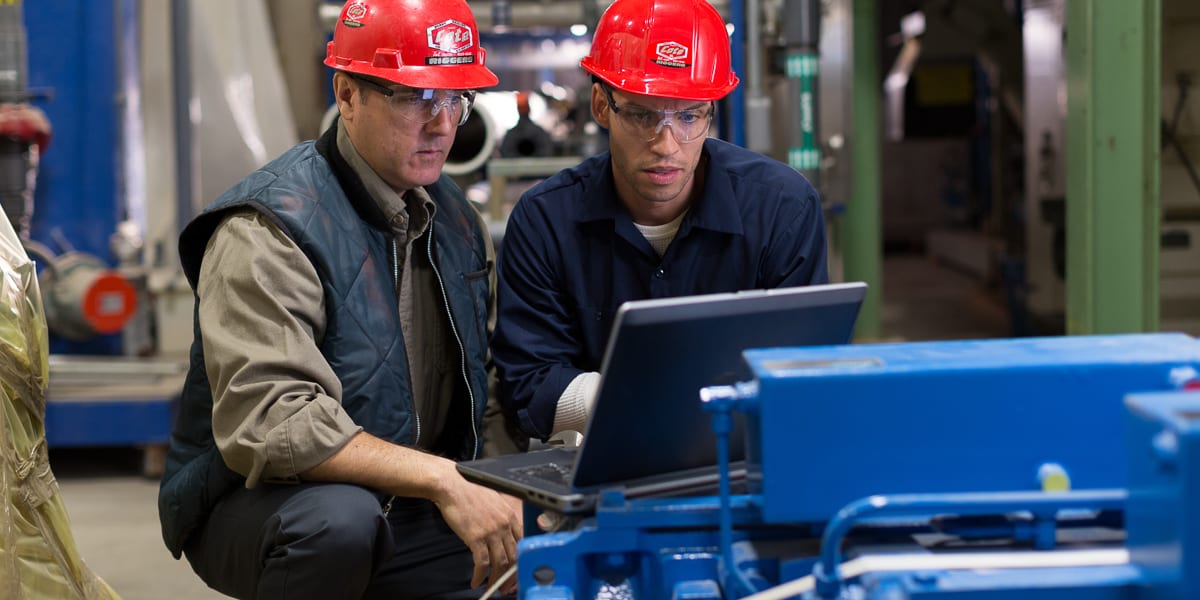You might’ve seen earlier this year we launched our Connected Field Service (CFS) product in conjunction with PTC’s IoT platform ThingWorx. The main problem we looked to solve in building the solution: how to leverage data from connected devices to fuel benefits in field service.
Machine-to-machine communication has existed for decades but “IoT” and “Industrial Internet” have become hot buzzwords the past couple of years. This has been largely due to the increased power and reduced costs of sensors, coupled with platforms like ThingWorx that can capture, visualize and take action on that machine data faster than ever before. The field service industry is a prime example of where such action can result in measurable ROI.
From our team’s ongoing outreach to service leaders, it became apparent that what’s preventing masses from adopting IoT solutions isn’t vision or value proposition – it’s understanding the roadmap on where to get started and how soon can value start being realized. This IoT value journey can be broken down in four stages:
- Connect: The prerequisite to an IoT journey is to have your devices connected. Sounds simple in theory but evaluating the costs and ROI of retrofitting your installed base with hardware and firmware is not a trivial exercise. Today, we work with PTC and our partner network to help customers make these decisions related to their devices connected and talking to the cloud.
- React: After you collect data from machines you have to react. Devices can initiate a service request instead of wasting precious time for a human to discover the issue and call it in. Engineers can remotely visualize real-time diagnostics from the device and push firmware updates to resolve the issue without needing to dispatch an onsite technician. Service leaders see the ROI benefits of this stage clearly. Technician productivity increases and Mean-Time-to-Repair for work orders reduces – resulting in improved customer satisfaction. CFS enables service leaders to realize this today faster than ever before.
- Predict: Reacting fast to problems is cool. But what’s really awesome is using analytics to predict and resolve issues before they become problems. The data collected across several devices, combined with service history on those devices, can help anticipate the failure rate of their installed base so service leaders can take proactive action. Even better, the connected devices can reverse engineer alert rules based on their usage so that they do not require engineers to manually setup and adjust alert rules – the machines essentially police themselves. The benefits of prediction are obvious to service leaders and is the stage CFS is embarking on in the near future.
- Transform: Streaming data and the ability to move from reactive to proactive service unlocks viability for a shift to outcomes-based business models, or servitization. Once the infrastructure and technology is in place, companies won’t want to charge for a specific number of visits or ad hoc trips. They’ll want to set up contracts around keeping machines up and running. This is a fundamental business model change that requires a service company to be very confident in its predictive abilities in order to execute.
Today, there is a ton of mindshare spent on the ‘Predict’ and ‘Transform’ stages, and for good reason. However, both of these stages require service leaders to do some exploration as the algorithms for the analytics and the potential business model changes require iteration given these are unchartered territories for most service businesses. In the meantime, people shouldn’t undervalue how much service benefit is derived from knowing when reactive alerts come in and how to efficiently respond. Even if you never reach the ‘Predict’ or ‘Transform’ stages, one can extract so much value by executing the a comprehensive connected device strategy in the ‘React’ stage.
In partnership with PTC, we were challenged to think through the journey of extracting value from that streaming data and determine the shortest path for service leaders to realize that value. We came up with Connected Field Service. To learn more about what CFS can do for you, click HERE and REGISTER for Maximize 2016.


Share this: